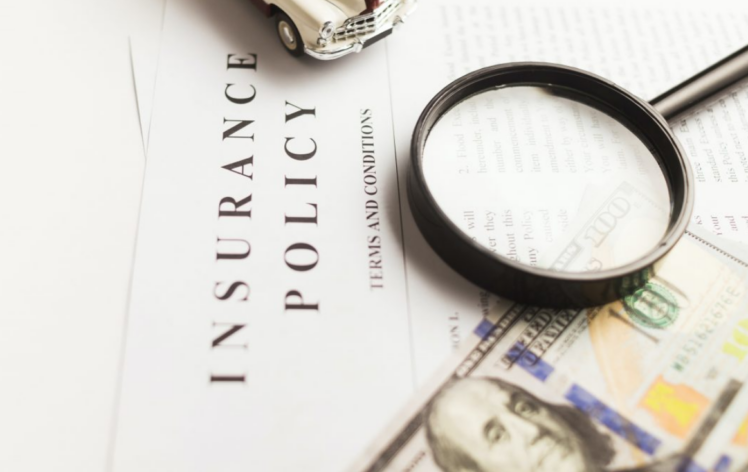Riding a motorcycle can be a thrilling experience for loads of people. They can enjoy feeling the wind in their air and the road before them. While riding a motorcycle is exciting, it’s important to make sure you’re covered before hitting the road.
Finding the right insurance policy gives you the comfort of knowing that if you were involved in an accident, you would be covered.
According to the knowledgeable motorcycle accident lawyers at Riddle & Brantley, there are several aspects to investigate when finding the right motorcycle insurance that you need to investigate before coming to the right decision.
Understanding the Basics

Before diving into the specifics of motorcycle insurance, it’s essential to understand the basic components of a typical policy. Motorcycle insurance typically includes various factors. The main factor in insurance is their liability coverage.
This coverage helps pay for any injuries or damage to property if you’re at fault in an accident. If you get into an accident, you’ll need to see how the insurance collision coverage works. It covers repairing or replacing your motorcycle if you get into an accident with another vehicle.
You can also get comprehensive coverage, which protects you from other situations like theft.
Other Types of Coverage
It’s important to look at all your options when investing in your insurance. In the event of a situation with a motorist who doesn’t have the right amount of coverage or any, having insured/uninsured coverage assists you with extra expenses so you don’t have to worry about it.
Without you having to pay for it out of your own pocket. You can also invest in MedPay, or medical payment coverage, as this one helps cover medical expenses, no matter who was at fault.
A common one that most people get when getting motorcycle insurance is Personal Injury Protection. It’s like medical coverage but it’s broader as this one helps to cover extra expenses or lost wages in the event of an accident.
Type of Motorcycle
The type of motorcycle you ride significantly influences the insurance premium. Sport bikes, for example, often have higher premiums due to their increased risk of accidents and theft. Cruisers, on the other hand, may have lower premiums.
Talk to an insurance agent before agreeing to the motorcycle insurance. Be sure to give them all your information so they can find the coverage that works best for you.
Usage
How you use your motorcycle affects the insurance coverage you need. If you use it for daily commuting, your policy may differ from someone who rides recreationally or participates in motorcycle events.
Your riding experience is a major factor. Inexperienced riders may face higher premiums, while seasoned riders with a clean record may qualify for discounts. So be sure to see how much you’re using your motorcycle before committing to insurance that you might not need.
Location

Where you reside plays a role in determining your insurance costs. Urban areas with higher traffic and crime rates may result in higher premiums compared to rural areas. So, depending on the area you live in, you might be paying for more.
Take this into account when talking to the insurance company and look around for what works best for you. You don’t want to make any assumptions during this process.
Coverage Limits
Consider the limits of coverage that suit your needs. While state minimums exist, they may not be sufficient to cover all potential expenses in the event of an accident. The deductible is what you pay before insurance steps in.
A higher deductible often changes the price of the premium, but it means you’ll have more expenses if there’s a claim. Always get all the details before agreeing to anything. Inquire about available discounts. Many insurers offer discounts for completing safety courses, being a safe rider, bundling policies, or having anti-theft devices.
Customizing Your Coverage
Now that we’ve considered the factors influencing your insurance decision, it’s time to customize your coverage based on your unique needs. If you’ve added custom parts or accessories to your motorcycle, such as a custom exhaust or upgraded saddlebags, consider accessory coverage.
Standard policies might not fully cover these additions. Standard policies often provide the actual cash value of your motorcycle in the event of a total loss. If you prefer more coverage, consider a policy that offers replacement cost coverage.
You can include things like roadside assistance to help you if you’re stuck somewhere and need a ride. This goes along with transport coverage if you must move your bike somewhere. These are all things to consider when it’s time to look for insurance coverage.
Reviewing and Comparing Policies

Once you’ve gotten your coverage customized, it’s time to review the policies from different insurance companies. Here you need to see where you want to put your money. Be sure to research reviews of these companies and see how other customers are reacting.
If they show that they’re worth the effort, then they might be the company for you. Always ask questions and check in with them if you’re quite not sure about their policies.
Additional Considerations
In addition to the primary factors mentioned earlier, there are a few more considerations to keep in mind when selecting the right motorcycle insurance policy. Some insurers offer usage-based insurance, where your premium is determined by how often and how well you ride.
This can be a cost-effective option for those who use their motorcycles not as often. If you own multiple bikes, then having multi-bike policies is a great way to make sure they’re all covered at a good price.
For riders in colder climates who store their motorcycles during the winter months, lay-up policies are worth considering. This is great if you don’t take your bike out often due to the weather.
If you’re just financing your bike, then you can qualify for gap insurance. If anything, happens, the insurance covers the difference of your loan, saving you money in the end. Some insurers factor in your annual mileage when determining premiums.
It’s important to talk to your insurance about how much you plan on riding your back. That way, they’ll give you the premiums that work best for you.
Common Myths and Misconceptions

As you’re looking for the right motorcycle insurance, be sure not to fall into any myths that are all over the internet. One common one is that motorcycle insurance follows the bike but that’s not true.
If your friend borrows your bike and they get into an accident, your bike is still covered. People also assume full coverage means everything is covered. But that only covers a small portion of premiums.
Be sure to double-check with your insurance company to see what you’re paying for. Another myth is that you don’t need to insure older bikes, which isn’t true. It’s always best to make sure your bike is covered, no matter how old it is.
It’s important to be knowledgeable about the world of motorcycle insurance. This coverage keeps you safe from harm and losing money if you get in an accident. That’s why it’s best to work on getting your insurance before starting all your riding.
Research an insurance company with highly respected motorcycle insurance. Talk to a representative and give them all the details about your riding history and how much you plan on riding your motorcycle.
Discuss the different policies that are available and which ones will work best for you. Once you have all those details in order, you’re ready to get out on the road safely.

